Tech
Will AR bring beloved characters to life?

Last summer, the release of Pokémon GO in the app store announced the arrival of mainstream augmented reality (or AR) gaming in a big way. Bringing back Pokémon characters from millennials’ youth and making it possible to “catch” them in the real world, the app was an instant sensation, and the first truly new thing in mobile gaming in a while. By late July it had broken the record for downloads, and while excitement about the game has since tapered off, people are still talking about what new experiences could be inspired by Pokémon GO.
From a tech standpoint, it’s easy to see how a boom in AR gaming for mobile devices could be just around the corner. While companies like Samsung and Google have already introduced their own VR goggles that work with their phones, Apple is supposed to be preparing for a major foray into AR. The company is unveiling its iPhone 8 this fall, and it’s expected to have a lot to do with AR. We’ve also been led to believe that AR glasses of some kind will eventually come out for the iPhone 8. Given the ways in which Apple has always led the mobile industry, it seems likely that Google and Samsung will follow suit.
The question becomes what those AR experiences will look like. The answer could be just about anything. We could see “escape the room” style games in which objects and keys are placed in our actual environments, or we might see more shooters in which bad guys comes streaming into our homes. Looking at how Pokémon GO led the way in this budding genre, it’s likely that we’ll see some games built around the idea of bringing beloved characters to life in the real world.
First up when we consider these types of games is the Harry Potter franchise, or its Fantastic Beasts spinoff. In the months following the Pokémon GO explosion, there were reports of a Fantastic Beasts mobile game that would work in much the same way, with users capturing magical beasts from the wizarding world. The reports were turned out to be false, or at least very premature, as no such game has emerged (and nothing seems to be in development). Nevertheless, it’s a surefire hit if a developer can make it happen.
Another thought is something revolving around the Avengers. These superheroes are intensely popular when it comes to movies, but they’re also just as popular in gaming. Many of them appear in tons of mobile games, and they also pop up in some of the internet’s busiest slot games hosted by casino software developers. These slot games demonstrate the power of the characters themselves by bringing an extra attraction to otherwise generic titles. What’s to stop a developer from using the same characters to bring an audience to a new AR experience? We could imagine a sort of real world adventure where popular superheroes materialize to help us on our way.
It’s also worth considering that we could also see more AR games aimed at children. Some might consider Pokémon GO or a possible Fantastic Beasts game to fall under this umbrella, but think more of games like Angry Birds. The hit game also inspired an animated comedy that was squarely aimed at a younger audience, and turned the titular birds into lovable characters. A game that could bring these characters into your living room would be a huge hit with kids, and probably some adults too.
The point is that technology is able to bring our favorite heroes and characters into the real world, and it probably won’t be long before we see more games taking advantage of it. As the tech behind AR and VR keeps getting better it’s worth keep an eye on how this is going to affect video games in the future.
Tech
The Evolution of Twitter from 2009- 2022

The definition of “tweet” was added to the Oxford English Dictionary in 2013. This year we have witnessed one of the most influential and powerful individuals on our planet, President Donald Trump, making regular headline news with the content he shares over Twitter.
But how did this massive platform come to be, and how has it evolved over the years?
How did Twitter reach people?
The first Tweet was published on March 21, 2006, 9:30 pm PST, when Jack Dorsey, co-founder of Twitter, posted: “just setting up my twttr.”
https://twitter.com/jack/status/20
The platform was initially launched as Twttr! At the time (and still today), it was a popular trend for companies to drop vowels in their name. Just look at social channels like Flickr, Tumblr, and Scribd.
However, shortly after Twttr’s launch, the company rebranded and changed its name to “Twitter.”
The History of Twitter from 2009 to 2022
- In June 2009, Twitter introduced verified accounts after many high-profile celebrities had complained about impersonation on Twitter. The verification tick can now be applied for by any person or business, letting people know that an account of “public interest” is authentic.

- In July 2009, Twitter added hyperlinks to #hashtags. People had already been using hashtags in their tweets regarding specific events and topics, but now people could explore hashtags just by clicking on them. This was a hugely important step for Twitter.
- In November 2009, Twitter introduced retweeting. Users had previously been reposting someone’s tweet by writing RT at the start of their tweet. Twitter caught on and eventually introduced retweeting so people could do this easily, with the click of a button.
- In September 2010, Twitter delivered “New Twitter” – the most significant update to the website’s interface. The design had a complete upheaval, with videos and photos becoming viewable on Twitter.
- In December 2011, Twitter introduced revamped Web site to make the microblogging service easier and help companies showcase their brands better. The new version of Twitter would feature a new look and feel and faster performance.
- The redesigned website comes as Twitter is taking steps to introduce more advertising and faces increased competition from Web giants Facebook and Google Inc.
- In October 2011, Apple Inc integrated Twitter’s service directly into the popular iPhone software. Since then, Dorsey said, the number of monthly sign-ups for Twitter has increased by 25%.
- In the same year, the new version of Twitter sought to simplify the service and made it easier for new users to understand various Twitter-specific features, such as the # symbol (hashtag) used to search for topics on the service.
- The new version of Twitter also featured a revamped profile page, in which a company can customize the look of its brand and highlight specific content, such as videos or photos. Previously, the profile pages displayed a chronological list of the company’s most recent Tweets.
- Twitter was taking steps to build a profitable business on top of its popular service. The company began showing ads on limited parts of the service in 2010 and is expected to generate about $140 million in ad revenue this year, according to estimates by industry research firm eMarketer.
- Twitter became an effective fund-raising platform when the Red Cross launched a mobile giving campaign that surpassed all expectations. High-profile users tweeted about the drive to help victims of the Haiti earthquake. Many of their followers tweeted and retweeted the message, helping the Red Cross raise more than $8 million within 48 hours of the Haiti earthquake, a large-scale earthquake that occurred on January 12, 2010, on the West Indian island of Hispaniola, comprising the countries of Haiti and the Dominican Republic.
- In June 2012, Links pasted into a tweet now had a content preview, image, or video of the link. This made the content shared by URL a lot more dynamic and engaging.
- In January 2013, Twitter launched Vine, an app that allows you to shoot and share six-second looping videos. The Vine experiment was interesting, with the intention for the platform to be a way to capture “casual moments in their [users] lives and share them with friends.” Videos were viewable on Twitter.
- In September 2013, Twitter filed to become a public company. (It announced the news to the public in a tweet.) It’s initial public offering (IPO) in November raised $1.8 billion, giving it a market value of $31 billion.
- In June 2014, Animated GIFs could be shared and viewed across all of Twitter’s platforms (desktop, mobile, and app).
- In March 2015, Periscope, an app that allows live streaming, was acquired by Twitter for a reported $85million. This highlighted a growing trend for live streaming across social media.
- In October 2015, Twitter introduced poll questions to their Tweets, allowing users to ask polling questions with up to 4 possible answers.
- One of Twitter’s co-founders, Jack Dorsey, returned as CEO in October 2015. Twitter had continued to grow in popularity but had yet to become profitable, so it added other features to increase user interaction. Twitter added a new feature, Moments, which allowed users and the service to create curated thematic collections of tweets and other content. Moments were displayed prominently in their tab in the app.
- The most radical change occurred in March 2016, when Twitter replaced its chronological timeline (in which tweets were ordered by time) with an algorithmic timeline in which tweets that were popular on the service or even tweets that were liked by the people a user followed would appear first. Twitter claimed this change made users interact with others and even tweet more. Still, some criticized it as creating an experience that would produce an information bubble confirming users in their existing biases.
- In January 2017, Twitter replaced Moments with Explore, in which trending subjects, including Moments, were collected. The character limit of a tweet was increased from 140 to 280 characters.
- Twitter finally became profitable in the last quarter of 2017, with 330 million monthly users.
- In December 2017, Twitter introduced a plus button to create threaded tweets easily. Just a month after increasing the character limit, Twitter appears to be angling towards sharing long for content more easily.
- In Early 2019, Twitter switched from tracking monthly users to “monetizable daily active users,” the number of users exposed to ads daily.
- Fleets, added in November 2020, were collections of tweets and other content designed to vanish within 24 hours, much like Stories on the social networks Snapchat, Instagram, and Facebook. However, Fleets failed to catch on with users, and the feature was discontinued in August 2021.
- In May 2021, Twitter introduced Spaces, in which accounts with more than 600 followers could host live audio conversations.
- As of late 2021, the service had 217 million monetizable daily active users. In November 2021, Dorsey stepped down as CEO again and was replaced by chief technology officer Parag Agrawal.
- In 2022, Twitter announced that it was to be purchased by South African-born American entrepreneur Elon Musk for about $44 billion. Musk was to become the sole owner of the company.
Three months later, Musk announced that he was withdrawing his bid for Twitter, citing concerns over bot accounts and claiming that the company was in “material breach of multiple provisions” of the purchase agreement.
Bret Taylor, the chair of Twitter’s board of directors, responded by saying that the company was “committed to closing the transaction on the price and terms agreed upon with Mr. Musk.” By then, Twitter shares had declined roughly a third from Musk’s proposed purchase price.
- In July 2022, Twitter sued Musk to force him to buy the company, and in September 2022, Twitter’s shareholders voted to accept Musk’s offer.
The changing face of Twitter
Over the years, the Twitter logo went through some exciting changes, as shown below:

The changing face of Twitter- Logo Evolution
Twitter’s homepage and its design evolution
Twitter’s homepage design was revealed on April 15, keeping the now familiar bird but dropping the word “Twitter.” The new layout aims to create a broader content hub to hook potential new users, gathering Tweets into a curated list of topics instead of popular individual tweets and trending hashtags. These screenshots of Twitter’s homepage as it evolved since its founding in 2006.
Twitter’s Homepage Changes from 2006 to 2020
Twitter was created in March 2006 and launched later that year in July. Since then, it has evolved a lot. Today we will review the changes and evolution of Twitter’s homepage design in the last fourteen years just as follows:
2006-2008

2009-2010

2011

2012
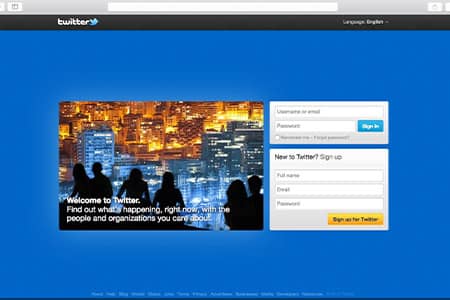
2013
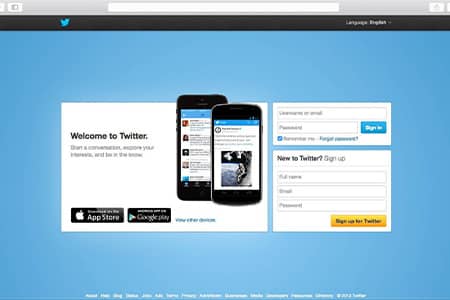
2014
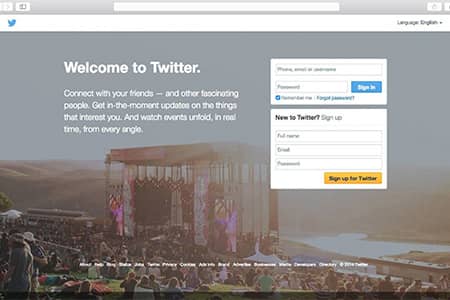
2015

2016
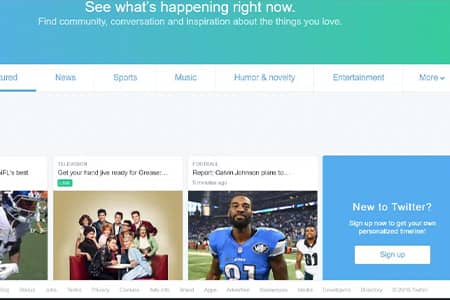

2017
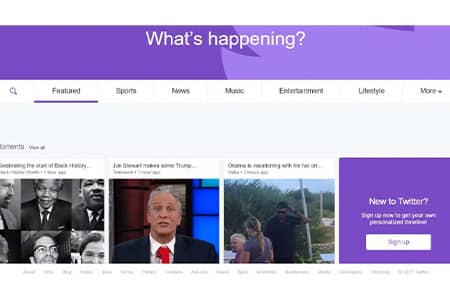
2018
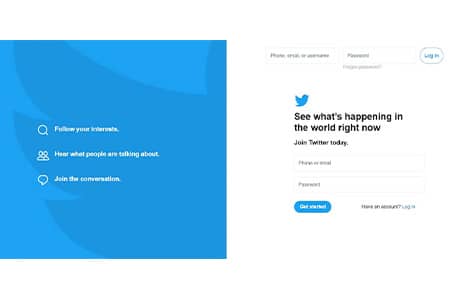 2019-2020
2019-2020
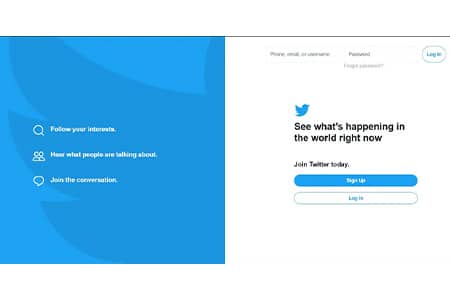 2021
2021
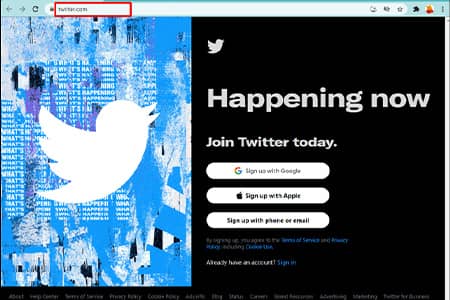
2022

And yet Twitter will still be developing year by year to cope with the new technology updates and digital world demands. Can you imagine what Twitter will look like in 2030?
Marketing
5 AI Copywriting Tools That Are Transforming Content Creation

In today’s digital world, businesses constantly seek ways to stay ahead of the competition. One of the most effective ways to achieve this goal is through content creation. However, creating engaging content requires a significant amount of time and effort, which can often be a challenge for busy professionals. This is where AI copywriting tools come into play. In this article, we will explore the latest developments in AI-powered copywriting tools and how they are revolutionizing content creation.
What are AI Copywriting Tools?
AI copywriting tools are software programs that use artificial intelligence (AI) and natural language processing (NLP) to generate high-quality content. These tools allow users to create content quickly and easily, without extensive writing skills. The software analyses data and generates text content, including articles, blog posts, product descriptions, social media posts, and more. The content generated by these tools is often indistinguishable from content written by a human, making it an excellent option for businesses looking to scale their content creation efforts.
Benefits of AI Copywriting Tools
Here are some of the benefits of using AI copywriting tools:
- Increased efficiency: AI-powered tools can generate content faster than humans, allowing businesses to produce more content in less time.
- Improved accuracy: These tools can help ensure that content is free from errors, improving the overall quality of the content.
- Cost-effective: AI copywriting tools can be more cost-effective than hiring a full-time writer, particularly for businesses that require a lot of content.
- Consistency: These tools can help ensure that content is consistent in tone and style, which can be a challenge when using multiple writers.
Top AI Copywriting Tools
There are several AI copywriting tools available in the market. Let’s take a look at some of the top options:
1. Writesonic
Writesonic is an AI-powered copywriting tool that uses deep learning algorithms to generate high-quality content. The tool offers many features, including blog post generation, product descriptions, landing pages, and more. It also supports multiple languages, making it an excellent option for businesses in different regions. Additionally, the tool offers a content rephrase, which can help businesses avoid duplicate content penalties.
2. Copy.ai
Copy.ai is another popular AI copywriting tool that uses GPT-3 technology to generate high-quality content. The tool offers several features, including blog post generation, email marketing, and social media post creation. It also provides a feature called “Inspire Me,” which gives users writing prompts to help them get started.
3. Conversion.ai
Conversion.ai is an AI-powered copywriting tool that uses GPT-3 technology to generate high-quality content. The tool offers many features, including blog post creation, product descriptions, and more. It also provides a feature called “Long-Form Assistant,” which can help users create in-depth content, such as articles and white papers.
4. Articoolo
Articoolo is an AI copywriting tool that uses NLP technology to generate articles and blog posts. The tool analyses a user’s topic and creates an article from scratch, making it an excellent option for businesses looking for original content. It also offers a feature called “Content Quality Score,” which can help businesses ensure their content is high-quality and engaging.
5. Writesphere
Writesphere is an AI-powered copywriting tool that uses GPT-3 technology to generate high-quality content. The tool offers many features, including blog post creation, product descriptions, and more. It also supports multiple languages, making it an excellent option for businesses in different regions.
Advertising
Advertising and Digital Adoption in MENA and SEA

As traditional advertising revenues plummet globally and broadcasting budgets are slashed, The Middle East and North Africa (MENA) and South East Asia (SEA) regions have reported tremendous growth in digital adoption and a rise in digital advertising revenue as a result.
This growth is driven by an increase in internet users, smartphone penetration, and the rise of social media platforms. AI Copywriter tools are now being widely adopted by brands, organisations, and companies in these regions to enhance their digital advertising campaigns.
Let’s delve deeper into the trends and statistics of advertising revenue and digital adoption in MENA and SEA.
Digital Advertising in MENA

MENA has emerged as one of the fastest-growing digital advertising markets, driven by a young population and increasing smartphone penetration. According to a report by McKinsey, the United Arab Emirates (UAE) has the highest degree of digitisation, while Egypt represents the largest untapped opportunity. The report also highlights a growth in the adoption of digital channels and spending in the coming years, coinciding with the increased use of artificial intelligence (AI) across all sectors.
The Market Size
The digital advertising market in the MENA region is estimated to be worth over 1.2 billion U.S dollars in 2021. The market is expected to continue growing, with a projected growth rate of 20% by 2024. The region’s e-commerce market is also expected to grow and reach 69 billion U.S dollars by 2020. The GCC and Egypt account for 80% of the regional e-commerce market.
Media Channels in the MENA
The advertising market in the MENA region is witnessing a major shift toward digital advertising. Traditional channels such as newspapers are declining, while the internet is taking over with 44.2% of the total ad expenditure in 2020, according to Statista. Social channels account for more than half of the total digital ad spend, surpassing global benchmarks. The region is also moving towards a “mobile-first” strategy, with a majority of internet traffic generated through mobile devices such as smartphones and tablets.
Performance Marketing in the MENA
Performance-based campaigns are gaining traction in the MENA region, with 59% of advertising agencies significantly shifting into performance-based campaigns, according to a survey conducted by the Interactive Agency Bureau (IAB). Brands are demanding payment by results (ROI & Return on ad spend ROAS) as well as enhanced consumer insights and analytics.
Digital Advertising Agencies in the MENA
The MENA region has over 500 advertising agencies that have a large number of employees, with Egypt, Saudi Arabia, and the UAE fuelling the region with small and medium-sized agencies. The UAE is home to big advertising firms, while Egypt, Lebanon, and Jordan represent the majority of digital marketing talents and creative resources. However, the highly qualified talents in digital advertising and performance are always moving outside the region to join companies in the European market.
Programmatic Advertising in the MENA
The slow transition from traditional to digital media is one of the key reasons programmatic advertising is struggling to dominate the region. Collectively, the MENA trails other regions in innovation and adoption of ad tech and marketing technologies. The top ad networks in the MENA region include Facebook, Google Ads, IronSource, Applovin, Adcolony, AdFalcon, InTarget, AdZouk, and Ambush. The United Arab Emirates is leading the growth in programmatic advertising due to technology partners and pressure from clients and brands to automate the process and use AI.
Digital Advertising by Sector
According to Ipsos research, the top ten sectors in the region are dominated by beauty care, food, telecommunications, and entertainment. Telecommunications companies, followed by real estate and banking, are the top categories.
Digital Advertising in SEA

SEA is a rapidly growing digital advertising market, driven by a young and tech-savvy population. According to a report by eMarketer, digital ad spending in SEA is expected to reach 15.3 billion U.S dollars in 2021, with Indonesia, Thailand, and Vietnam leading the growth.
The Market Size
The digital advertising market in SEA is expected to grow at a rate of 13.7% in 2021, with a projected market size of 22.45 billion U.S dollars by 2025. The region’s e-commerce market is also booming, with a projected market size of 153 billion U.S dollars by 2025.
Media Channels in SEA
SEA is also witnessing a major shift toward digital advertising, with traditional channels such as newspapers and TV declining. Social channels are the most popular, accounting for 63% of total digital ad spend, according to a report by Hootsuite. Mobile advertising is also on the rise, with a majority of internet traffic generated through mobile devices such as smartphones and tablets.
Performance Marketing in SEA
Performance-based campaigns are becoming popular in SEA, with advertisers demanding more accountability and transparency. Brands are looking for more measurement and optimisation to ensure their campaigns are reaching the right audience and delivering the desired results.
Digital Advertising Agencies in SEA
SEA has a large number of digital advertising agencies, with many emerging startups and creative agencies. The region is home to a highly skilled workforce, with many professionals trained in digital marketing and advertising.
Programmatic Advertising in SEA
Programmatic advertising is becoming more popular in SEA, with many brands and agencies adopting the technology to automate their advertising campaigns. The region is also seeing an increase in the use of AI-powered tools and platforms to help advertisers optimise their campaigns.
Digital Advertising by Sector
The digital advertising market in SEA is dominated by the retail and e-commerce sector, followed by the travel and hospitality sector. The region is also seeing growth in the financial services, healthcare, and automotive sectors.
AI Copywriter Tools in Advertising
AI copywriter tools are becoming increasingly popular in the MENA and SEA regions, with many brands and agencies adopting the technology to enhance their digital advertising campaigns. These tools use natural language processing (NLP) and machine learning algorithms to generate high-quality, engaging content that resonates with the target audience.
AI copywriter tools can help brands and agencies save time and money by automating the content creation process. They can generate a large volume of content quickly and efficiently, allowing advertisers to test multiple variations of their ads and optimise their campaigns for better performance. AI copywriter tools can also help advertisers improve the quality of their content by ensuring that it is grammatically correct, engaging, and relevant to the target audience. They can analyse data from social media and other sources to identify trends and insights that can inform the content creation process.
Conclusion
The MENA and SEA regions are witnessing tremendous growth in digital advertising and digital adoption, driven by a young and tech-savvy population, increasing smartphone penetration, and the rise of social media platforms. AI copywriter tools are becoming increasingly popular in these regions, providing brands and agencies with a cost-effective and efficient way to enhance their digital advertising campaigns. The future of digital advertising in these regions looks bright, with continued growth and innovation in the years to come whilst broadcast and traditional advertising feels the pinch. The time has come for the more conservative amongst us to take the plunge and fully embrace digital and all it entails.
-

 Startups9 years ago
Startups9 years ago3 Creative Egyptian Women Who Master E-commerce
-

 News10 years ago
News10 years ago11 Talented Egyptian Photographers on Instagram
-

 Campaigns8 years ago
Campaigns8 years agoVodafone Egypt Brings Generations Together, Unlocks 4G Power
-

 Marketing9 years ago
Marketing9 years agoWhich categories will suffer most from increased prices in Egypt?
-

 Apps8 years ago
Apps8 years agoRadio Garden Live Map of The Globe’s Radio Stations
-

 News8 years ago
News8 years agoTop 10 Egyptian Fashionistas to Follow on Instagram
-

 Campaigns8 years ago
Campaigns8 years ago7 Big Stats That Show Which Ramadan Advertisements Resonated Most
-

 Opinion9 years ago
Opinion9 years agoF*** Being a Founder, Be a Follower
